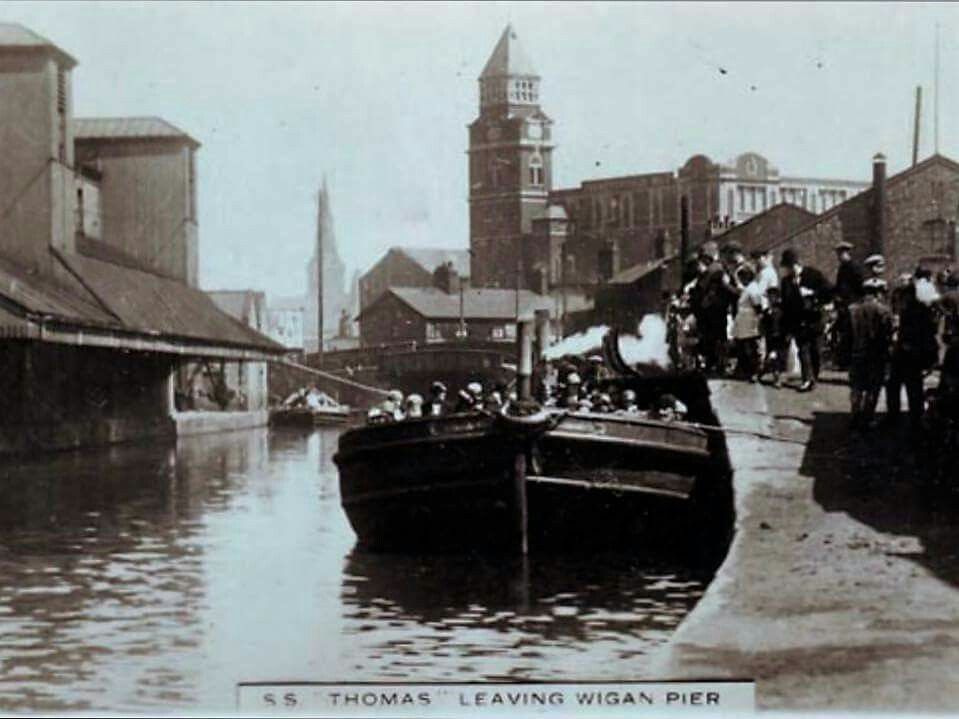I went to Wigan Pier but it wasn’t there. Not a barge in sight, nobody loading coal, or men wearing clogs, nor thin shivering women in shawls, bare-foot children with grubby faces like in the old photographs – in fact not a single person. And no sign of George Orwell. Just a desolate scene of boarded up buildings and the sound of traffic as a constant flow of cars, lorries and vans trundled around the A577. I rather liked it.
By chance I was in Wigan back in 2017 for a couple of hours and after recently having read Orwell’s The Road To Wigan Pier, his account of his odyssey around the North of England in 1936, I felt the least I could do was to pay homage to the once busy canal hub. And to pay homage to the writer of Animal Farm, 1984 and my favourite book on the Spanish Civil War: Homage to Catalonia.

His mission via Manchester, Liverpool and Sheffield was to examine the living conditions of the working class for a book on the plight of the working-class poor for The Left Book Club. My mission was less ambitious having spent a couple of hours in Wigan library writing about the differences between an empire line wedding dress and a princess line gown – and then briefly exploring the town centre with its statues to rugby’s Billy B, the rather depressing looking Face and George Formby – he of the ukulele.
With sleet turning to snow I set off with directions from a traffic warden in search of the pier following the signs along Wallgate under the railway line and past the used car lot to the canal and of course the pier. But as hard as I looked, I couldn’t find it. And my failure to find the famous pier at the junction on the Leeds and Liverpool meant I wasn’t the only one as George Orwell himself said in 1943 that he couldn’t find it as it didn’t exist, although it had once.

The original pier was a wooden jetty that was used for loading coal onto barges in the 19th century, but it was demolished before Orwell visited the lost industrial curiosity. The title of Orwell’s account of his sociological investigations into the poverty of the towns and cities of the North was in fact a musical hall joke about the wharf.
In a very different age as a nightclub called Wigan Pier by the canal it gained a notoriety in the 1990s for its house music before closure in 2011 and demolition. If you Google Wigan Pier on You Tube you’ll come across umpteen tributes to the one time disco. Clearly it had a big following as no doubt thousands of relationships were struck up to the sounds of Daft Punk, Alcatraz and Gusto. And a chunk of today’s residents was perhaps conceived following a night on the dance floor.

Taking the canal sidewalk I walked along as much of the paths around the canal hub that were open – despite its rather bleak outlook. You could see there was a potential to transform it into an area like the one in Birmingham with canal side pubs and restaurants but instead there was a feeling of decline and neglect despite the building work going on in the scaffolding clad buildings.

A weather-beaten notice board gave a potted history of the once thriving industrial centre while a rather sad life size statue of a docker made of some form of resin had decayed to the point of almost crumbling into the cigarette buts and discarded beer cans on the path. There were signs modernisation with some of the buildings looking like they were occupied and refurbished, but with no café, pub or shop open it left a meander around the canal paths as the main option. Neat paths and a mini park had been laid out and so like the many comments on Trip Advisor the canal walk was the highlight.
Wigan is a different place to the one Orwell visited 80 years ago – and has further changed since I visited with new businesses at Wigan Pier. Despite 19,000 children officially living below the breadline in 2020 based on figures from the Department of Work and Pensions and Wigan experiencing its share of social problems it is a much improved town from the one Orwell wrote about. There may no longer be 147 sweet shops or poor-quality food at the market and shops but the years since then with its Labour Governments, National Health Service and universal state education has seen (as in the rest of the country) huge improvements to the lives of most people – something I’m sure he (as a Socialist) would have approved of. And although he and me couldn’t be more different in many ways – we both used the public library in Wigan for research as writers.
Notes:
The Road to Wigan Pier, by George Orwell
George Orwell BBC Arena Part 2 – Road to Wigan Pier Available on YouTube
The Road Beyond Wigan Pier, by Gwenaëlle Lenoir
The Canal and River Trust have all the latest changes and attractions at Wigan Pier. Website: https://canalrivertrust.org.uk/places-to-visit/wigan-pier
For details for the work of the journalist Harry Mottram visit www.harrymottram.co.uk and follow him on FaceBook, Twitter as @HarryThe Spiv, Instagram, YouTube and God knows where else!


You must be logged in to post a comment.